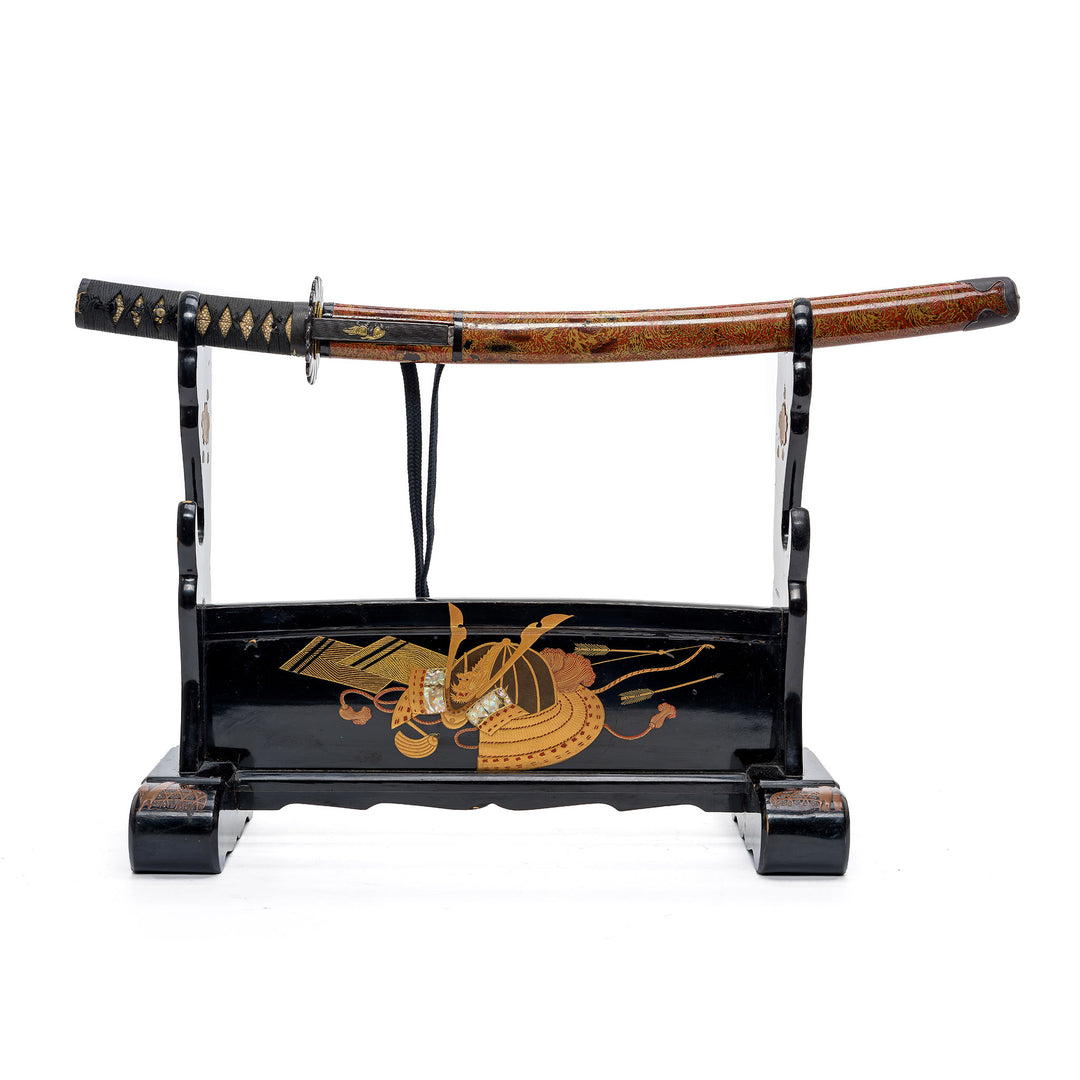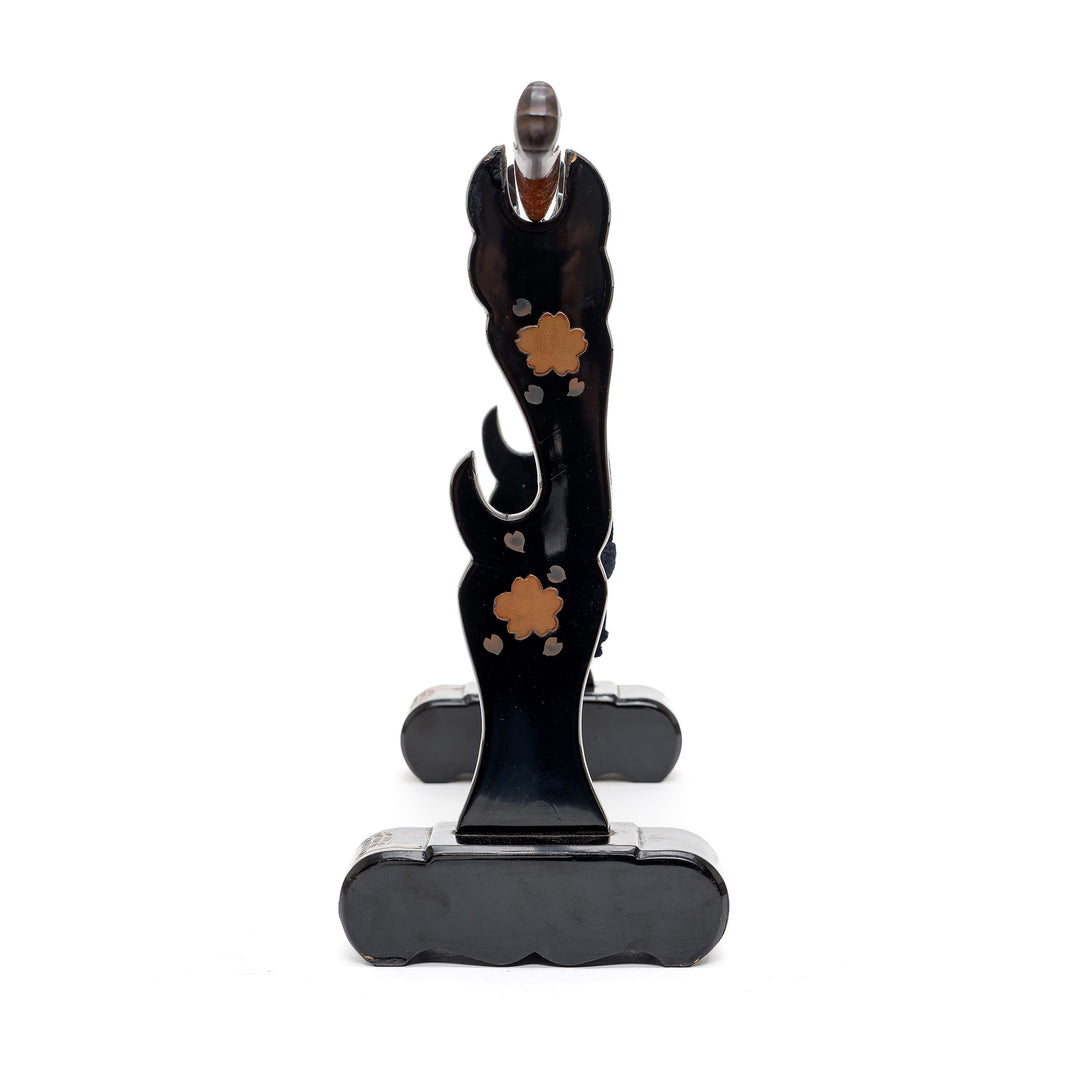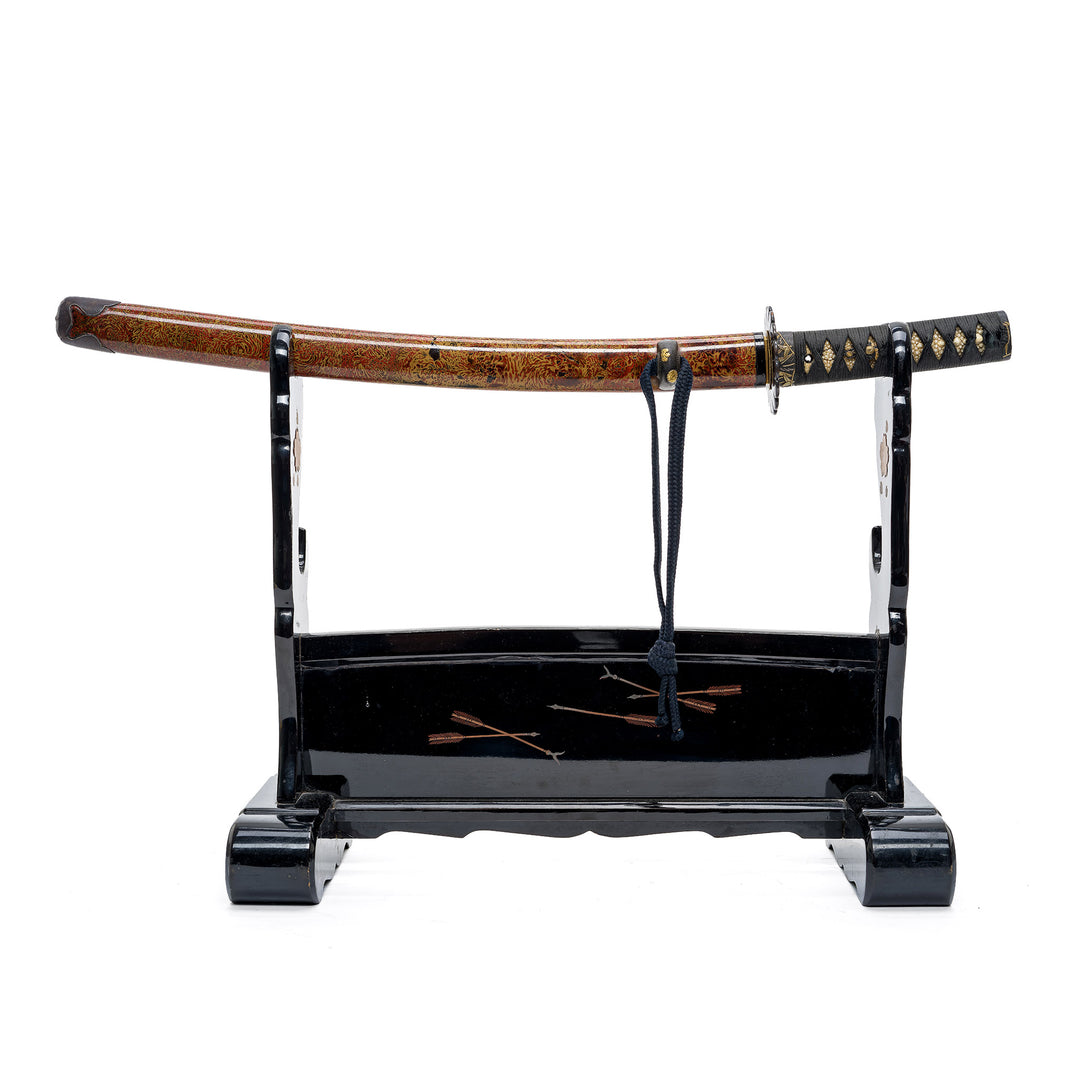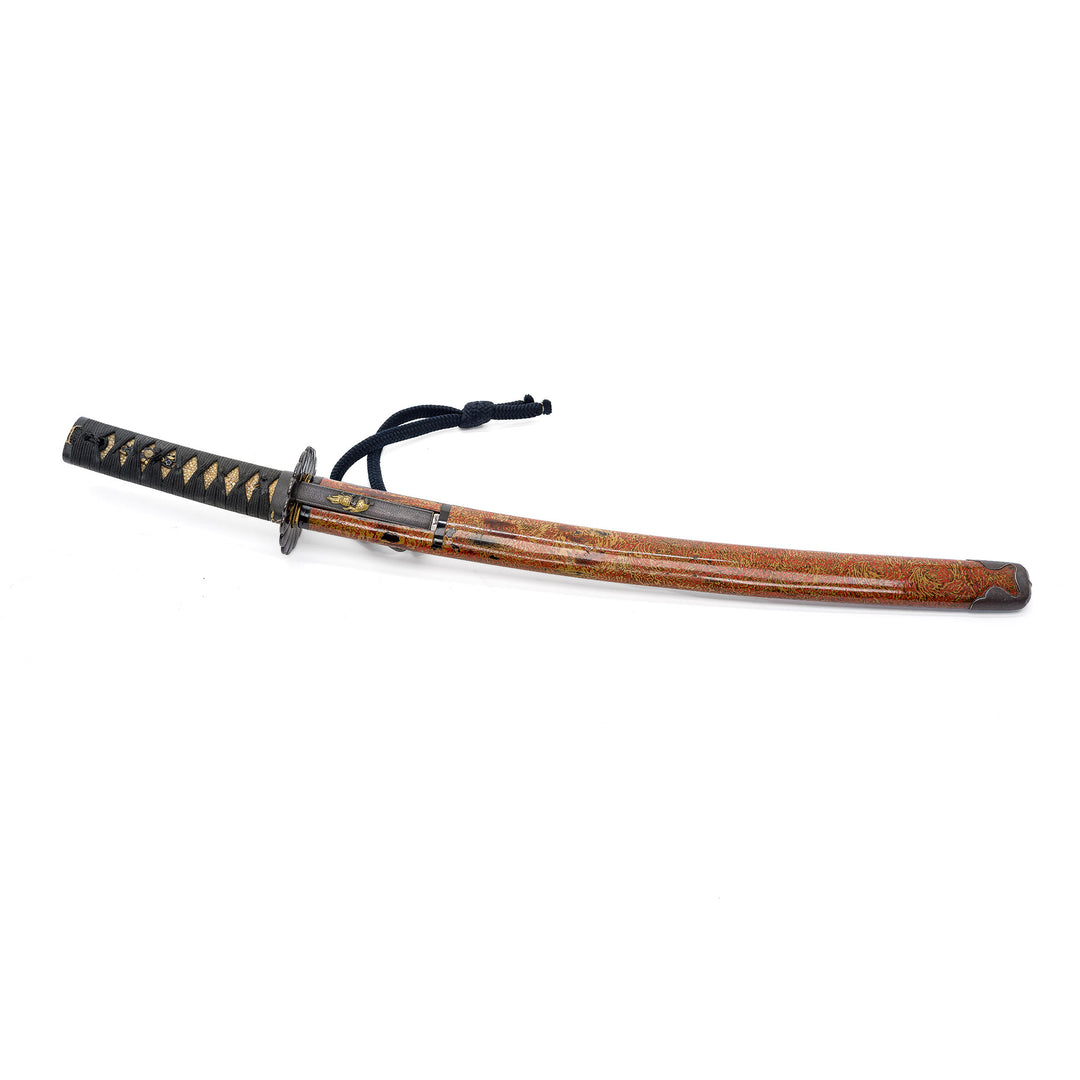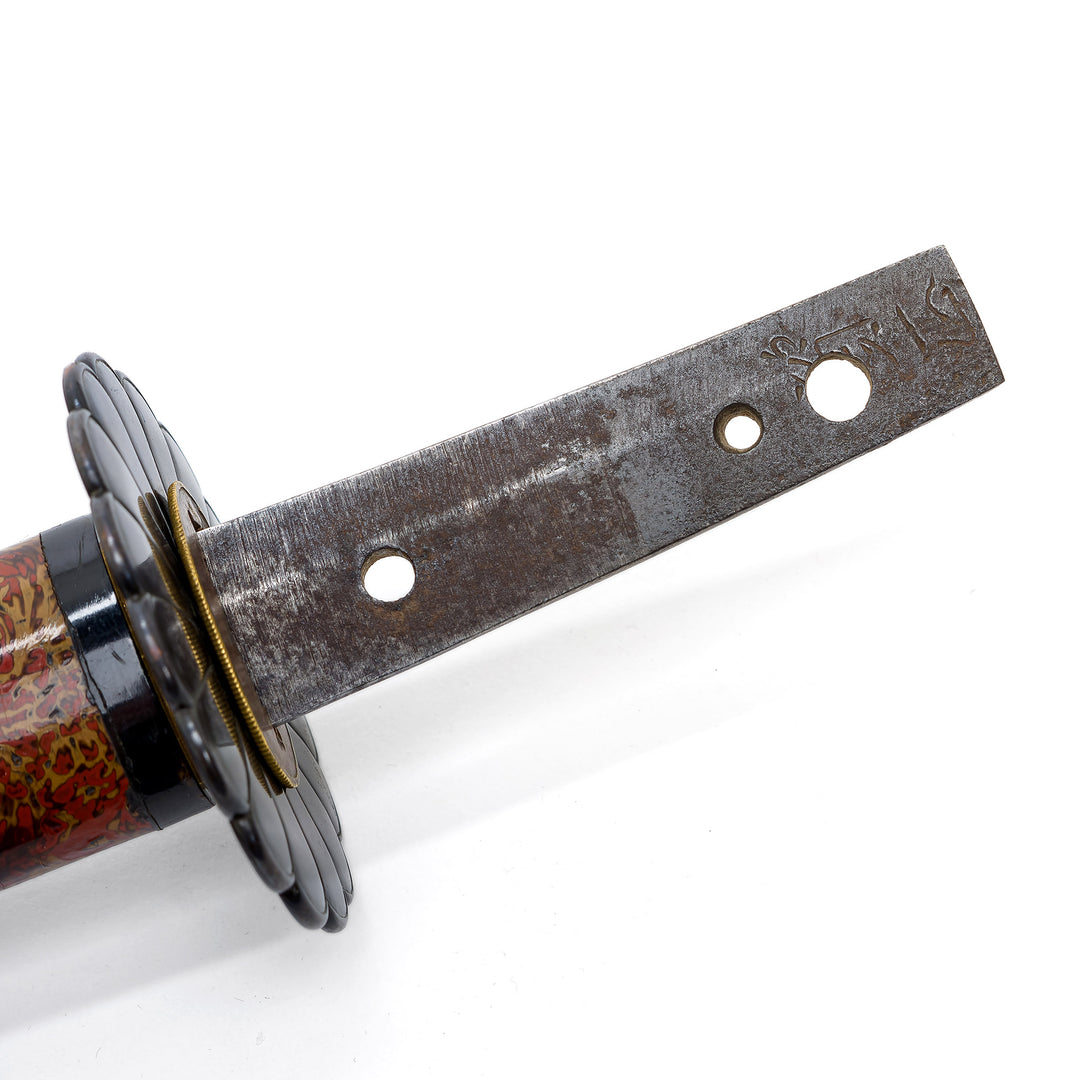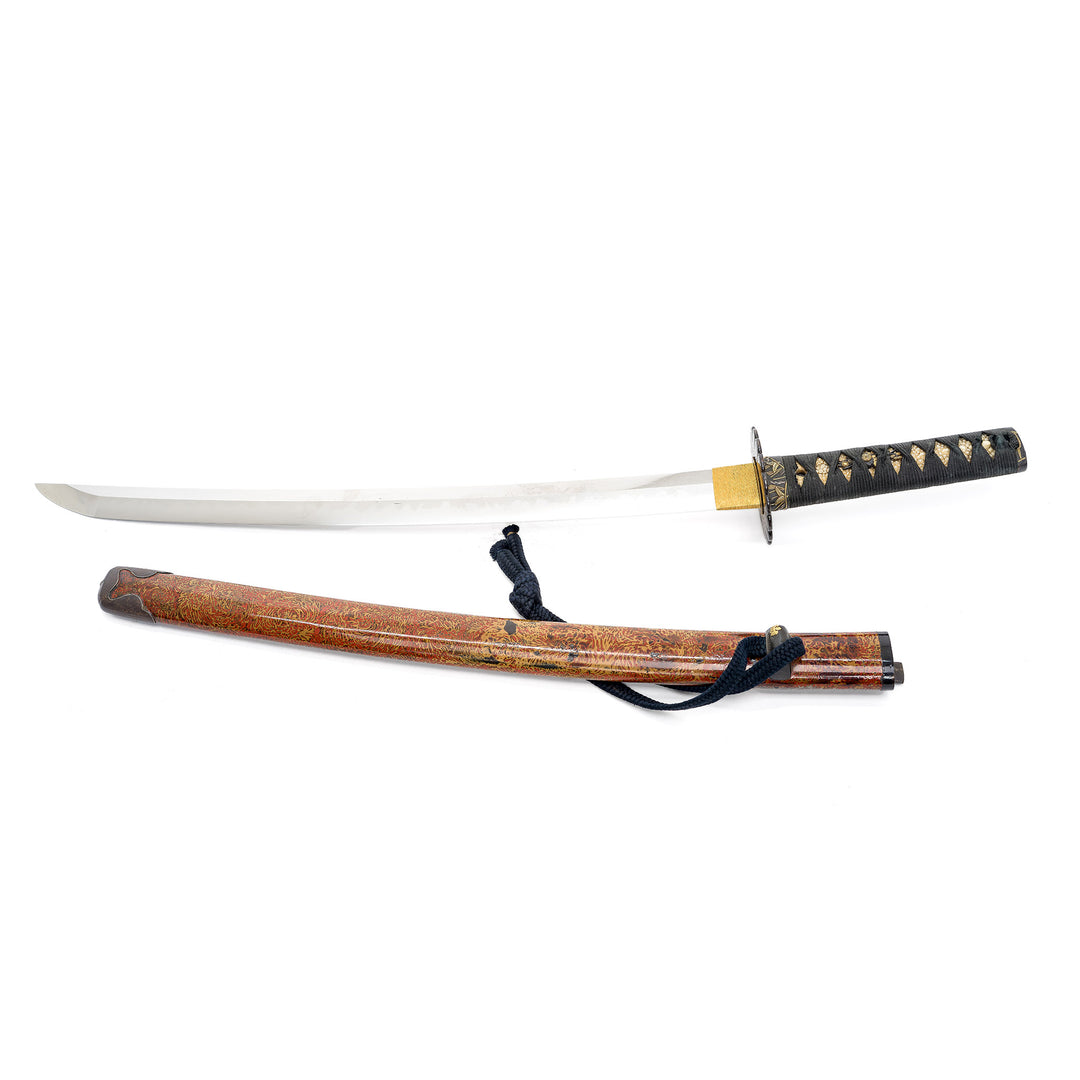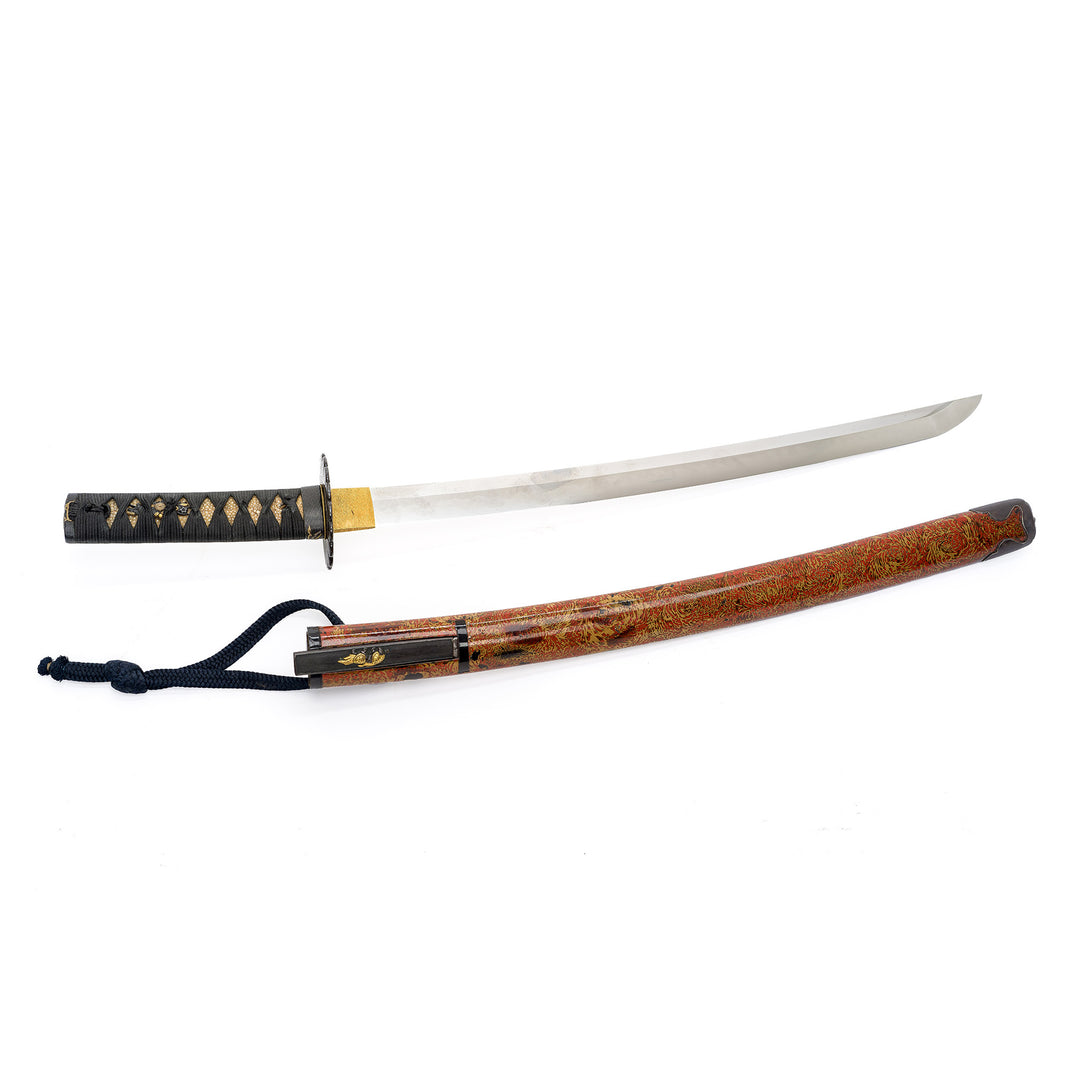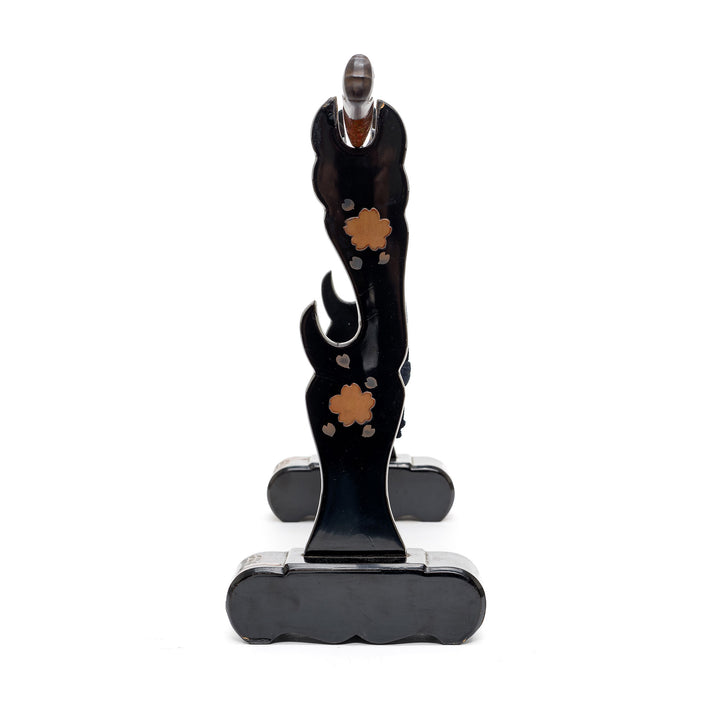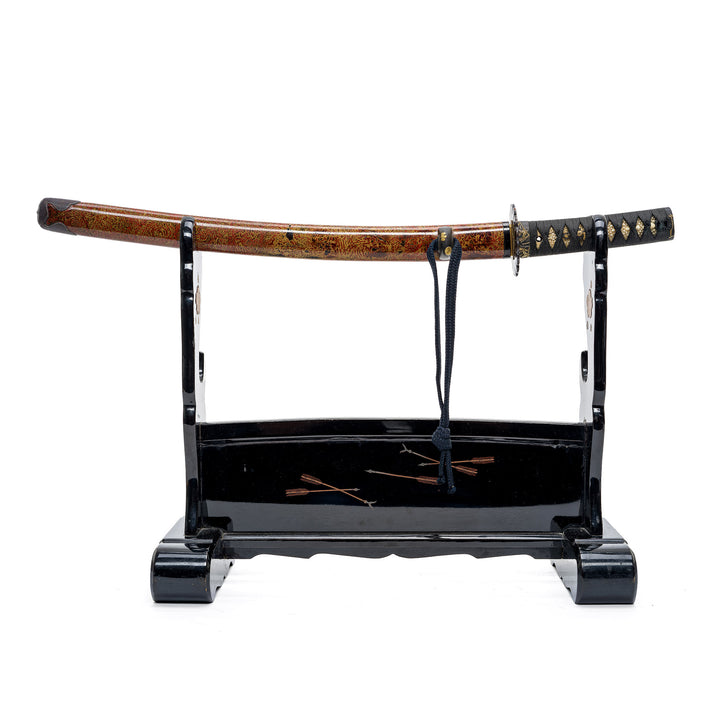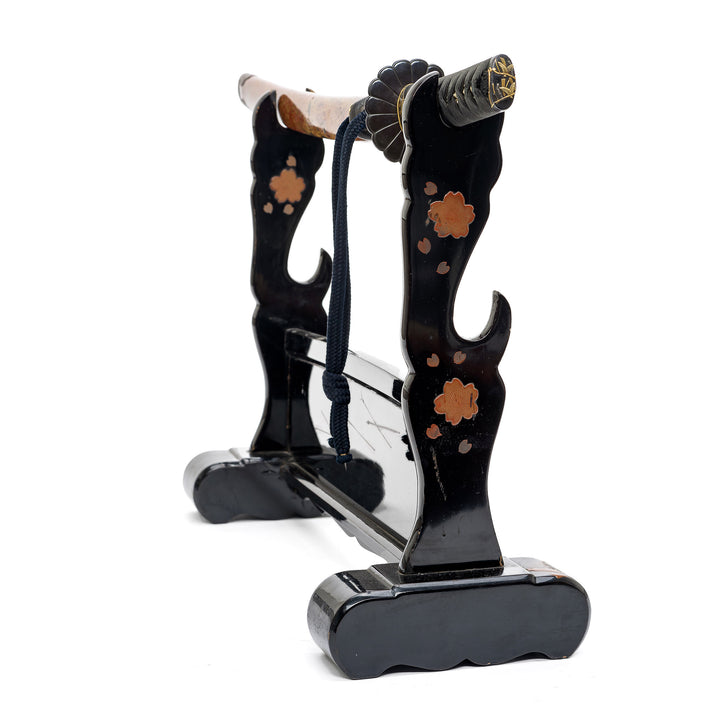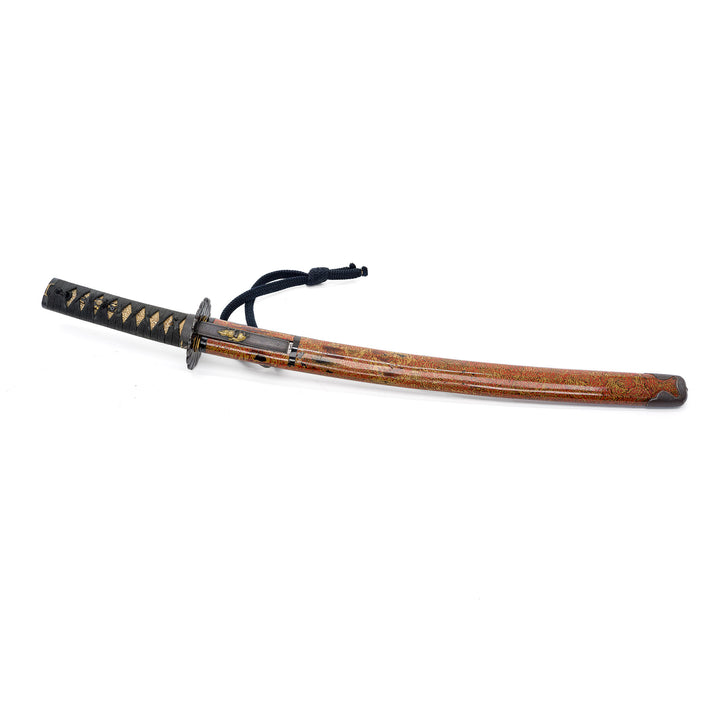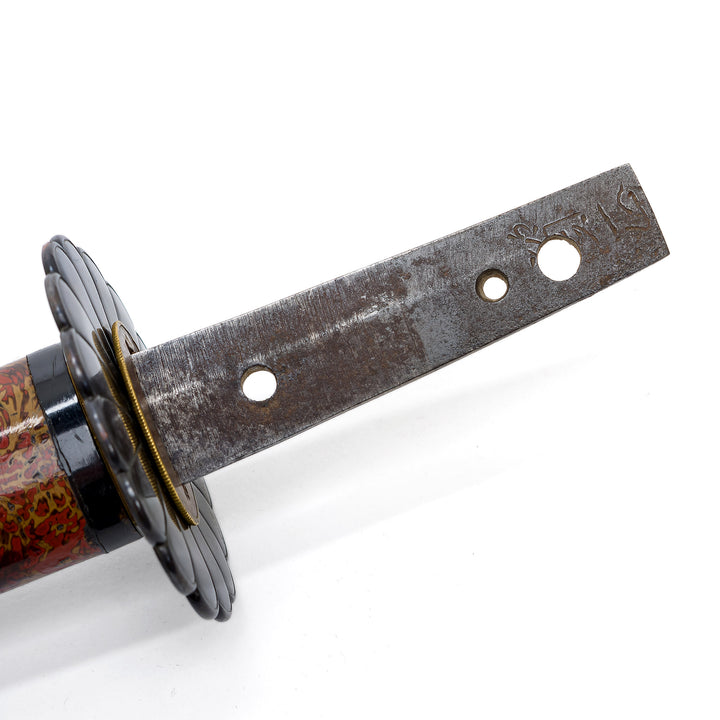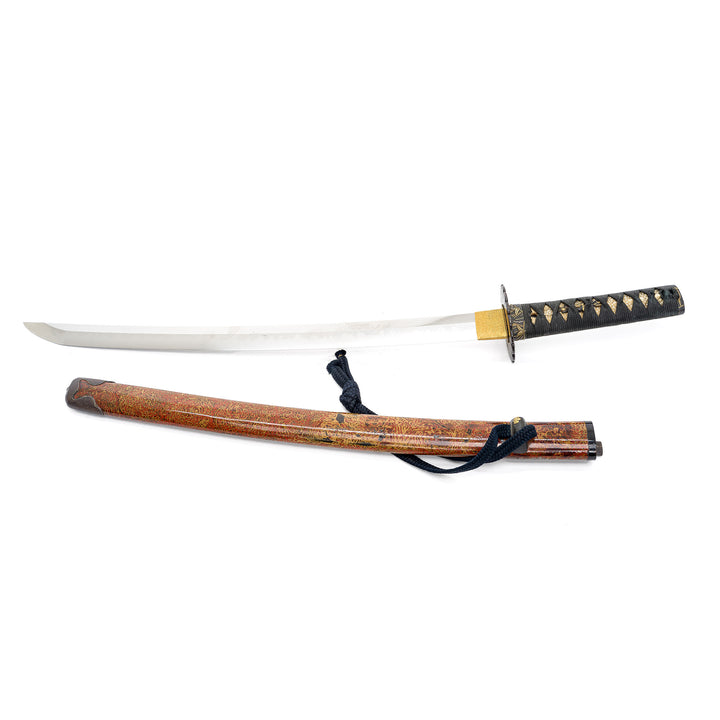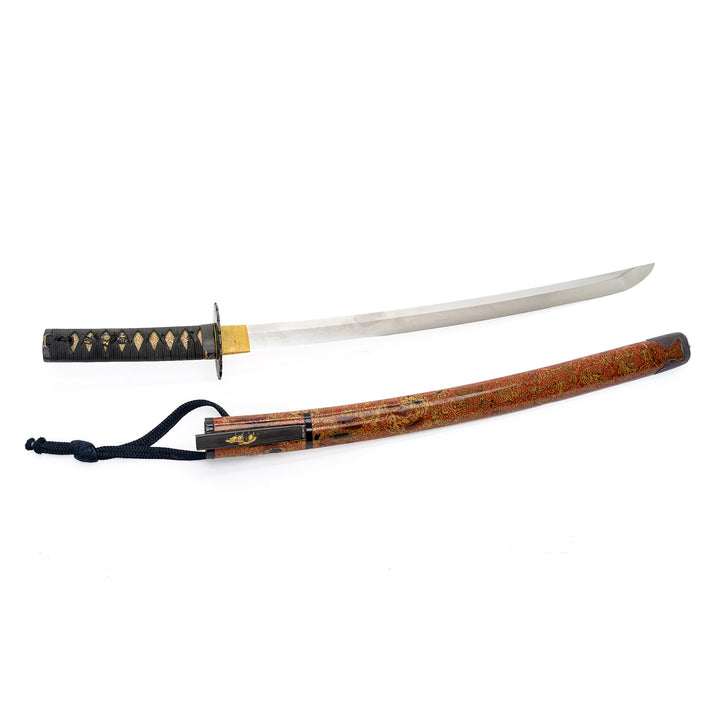Kanemoto Japanese Samurai Sword
17409
Legendary Craftsmanship from the Kamakura Era
- Origin: Attributed to Osafune Nagamitsu, Kamakura Period (13th–14th century)
- Mountings: Edo-period koshirae with lacquered scabbard and gold maki-e detailing
- Blade Features: Classic curved katana with wavy hamon and polished surface
- Handle: Black cord-wrapped tsuka with gold/brass menuki in diamond pattern
- Tang: Signed “長船氏” with two mekugi-ana and deep patina
- Symbolism: Represents samurai valor, heritage, and refined artistry
Forged during Japan’s late Kamakura period, this authentic Osafune Nagamitsu katana is a rare and powerful example of classical Japanese swordsmithing. Known for producing blades of exceptional strength and balance, the Osafune school—and Nagamitsu in particular—holds a legendary place in Japanese history. The signature “長船氏” etched into the tang links this blade directly to that prestigious lineage.
Historic Lineage and National Significance
Swords crafted by Osafune Nagamitsu are celebrated not only for their performance but also for their cultural value. Many are designated as National Treasures in Japan, reflecting their deep ties to samurai tradition and feudal artistry. This katana embodies the classic structure and style of Nagamitsu’s work, making it a prized piece for historians and collectors alike.
Elegant Edo-Era Koshirae
The Edo-period koshirae enhances the sword’s beauty with a lacquered saya (scabbard) finished in a rich reddish-brown hue. Intricate maki-e gold powder detailing lies beneath translucent layers, capturing the refined decorative artistry of the era. This mounting not only protects the blade but serves as a striking visual testament to Edo aesthetics.
Traditional Handle Design with Menuki Accents
The tsuka (handle) features a tightly wrapped black cord in a traditional diamond pattern. Hidden beneath are detailed menuki—gold or brass ornamental grips—that highlight the craftsmanship and functional elegance of the piece. The dramatic contrast of black and gold evokes the noble and disciplined image of the samurai warrior.
Signed Tang and Blade Integrity
The nakago (tang) reveals authentic aging with two mekugi-ana, hinting at repurposing or shortening (suriage) over centuries. Its clear signature, refined file marks, and patina affirm its legitimacy and age. Each detail further confirms its place within the Osafune Nagamitsu legacy.
Striking Hamon and Balanced Curvature
The blade showcases a gentle curve and a distinct wavy hamon along the edge—hallmarks of traditional heat treatment and blade control. This blend of beauty and functionality is what makes Nagamitsu’s swords some of the most desired by collectors worldwide.
Key Features of the Osafune Nagamitsu Katana
- School: Osafune, Bizen Province
- Period: Late Kamakura (1185–1333)
- Mountings: Edo-period lacquered saya with maki-e
- Handle: Black ito with gold/brass menuki
- Tang: Signed “長船氏” with authentic aging indicators
- Symbolism: Warrior heritage, artistic craftsmanship, and Japanese identity
Frequently Asked Questions
What is the Osafune Nagamitsu Katana?
This is an authentic Japanese samurai sword forged during the late Kamakura period by the famed swordsmith Osafune Nagamitsu. It features a signed tang, classic hamon, and Edo-era mountings, representing a fusion of martial tradition and artistic refinement.
How old is this katana?
The blade dates back to the late Kamakura period (circa 13th–14th century), making it over 600 years old.
What makes Osafune Nagamitsu swords so valuable?
Osafune Nagamitsu is considered one of Japan’s greatest swordsmiths. His blades are admired for their durability, refined structure, and iconic hamon patterns, often earning National Treasure status.
What is special about the Edo-period mountings?
The koshirae includes a lacquered scabbard with maki-e gold detailing and a traditionally wrapped tsuka with decorative menuki, showcasing Edo-period aesthetics and craftsmanship.
What is the weight of this bronze sculpture?
This listing does not include the exact weight. However, antique katana with full mountings typically weigh between 2.2 to 3.3 pounds (1 to 1.5 kg). Please inquire directly for precise details.
How do I maintain an antique Japanese sword?
Preserve the blade by storing it in a dry environment, lightly oiling it with choji oil, and avoiding direct handling of the blade with bare hands. For mountings, dust gently and avoid moisture exposure.
Is this sword suitable for display or handling?
Yes, it is ideal for display in a collector’s setting. While it retains structural integrity, handling should be minimal to preserve its historical value and condition.


